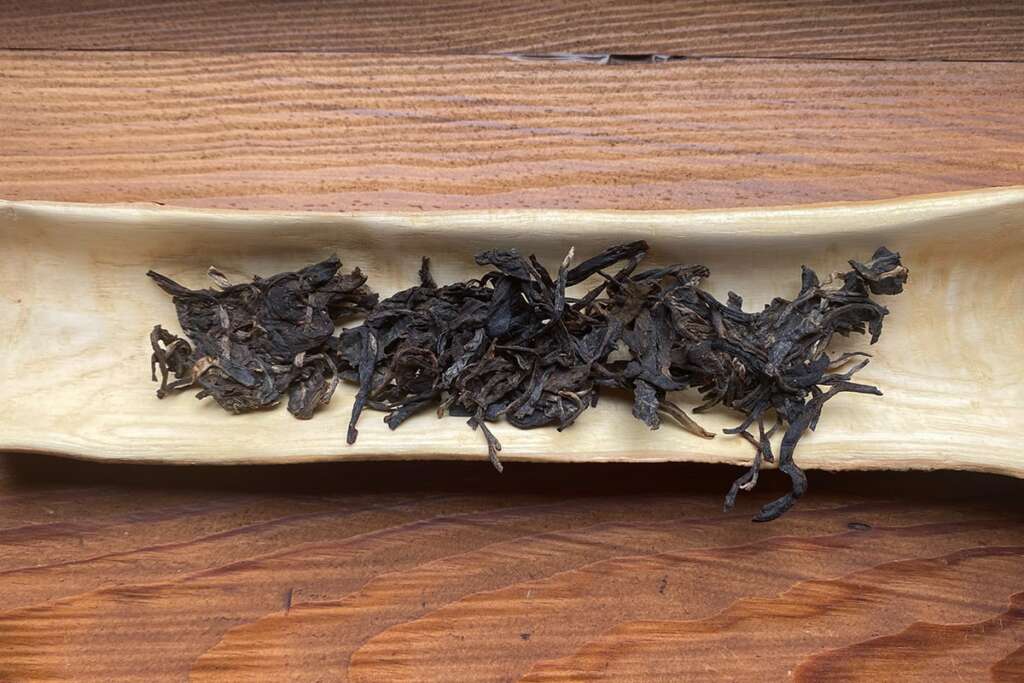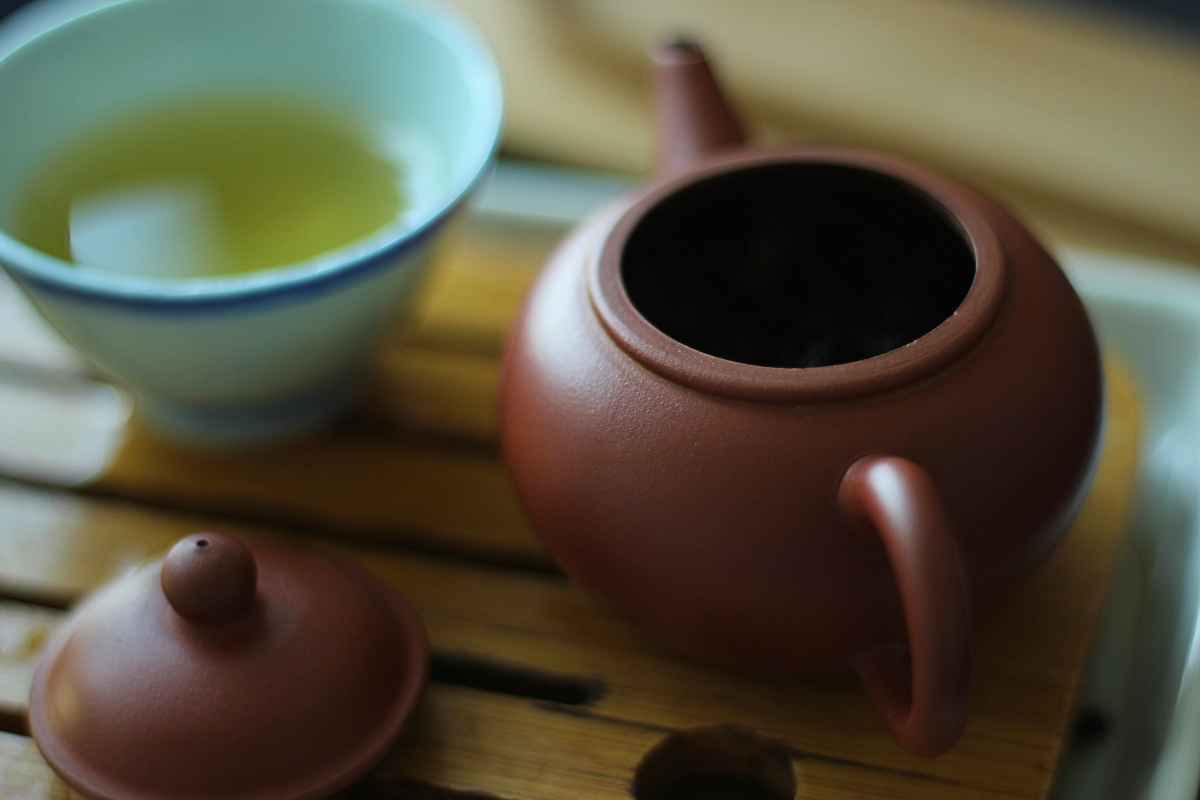The 2018 Sunsing Shangri-La is a tea I’ve had since last summer but it had been a while since I drank it. When I got it, I immediately noticed that this is an unusual tea. Originally, I added it to one of my orders at ANMO because of its very reasonable price and because it’s only a 100g mini teacake.

2018 Sunsing Shangri-La
This is a sheng puerh from Huang Shan in Yiwu. It’s produced by Sunsing Tea in Hong Kong with material from 2018. This means that it’s a fairly young sheng, but the leaves look really dark already. It’s produced by Mister Kings Yeung and they followed his method for picking, kill-green, drying and compressing this tea. This method helps to accelerate the ageing process.
The Huang Shan Area is Yiwu is relatively inaccessible and more difficult to harvest. This implies that the area is more natural and unpolluted (up to a certain degree). The trees that were picked to produce this tea were all young, which makes it more affordable but sacrifices some richness in the flavours and aftertaste.
Tea Tasting
- Water 99°
- 6g for a 140ml LQER Wuhuini teapot
The 2018 Sunsing Shangri-La has fairly big leaves with a uniform dark brown colour. It looks like tea that is already 10-15 years old. The aroma has some hints of storage, which might be due to its storage in Hong Kong. I’m also getting a hint of wet leaves in a damp forest. Once the leaves get wet, I’m getting sweeter notes that are fruity and it reminds me of a sorbet type of ice cream.

Infusion 1 (15 sec): the colour is fairly light compared to the aroma. It gave the impression that it would be a lot more intense. It feels gentle and subtle. None of the aged notes from the aroma are coming through. It’s slightly fruity with a touch of sweetness in the aftertaste. It’s there but doesn’t stay around for long.
Infusion 2 (20 sec): the liquor looks medium thick and it’s really clear. So much is happening in this infusion. The initial impression is completely different from the finish. It starts with some aged notes and transforms into a fresh and fruity finish. The aftertaste isn’t that prominent.
Infusion 3 (25 sec): I think the water had cooled down too much because the flavours felt a bit muted. More of the aged flavours are on the forefront and I also feel the liquor sticks more to the back of my throat.
Infusion 4 (30 sec): I boiled some fresh water for this one. The colour is darker again and it looks thicker. Flavours are going strong. It starts with more aged notes of wet leaves and gradually changes into a younger tasting sheng puerh. It goes from a middle-aged sheng to young sheng in the same infusion; never experienced this before.
Infusion 5 (40 sec): the liquor looks really thick. It doesn’t have the prominent aged notes from earlier, but more hints of dark berries are appearing. It’s still mostly focused on my throat.
Infusion 6 (50 sec): it feels similar. It slowly enters the body and flows gently. Towards the end, it’s getting sweeter and feels really good. The Yiwu sweetness lingers for a while but it’s not really present. You feel it’s there without being at the surface. There isn’t really an aftertaste.
Infusion 7 (long): similar to infusion 6 but less intense. Still smooth and pleasant.
Conclusion
The 2018 Sunsing Shangri-La is a complex tea that changed quite a bit, even in the same infusion. At the start, more of the aged notes were noticeable and this changed towards the finish. The finish shared some characteristics with other young sheng puerh teas: sweet and fruity. It looks like a sheng puerh of around 10 years old, but it isn’t. Really fun experience to delve into this one in an attempt to decipher it.
The later infusions were less about flavour and more about sensation. The fact that the material isn’t from older trees might be the reason that this one doesn’t really go the distance. Still, the sensation I got when drinking this one was really pleasant.
The 2018 Sunsing Shangri-La is exceptional value for money! If you want to try it, you can buy it over here.




